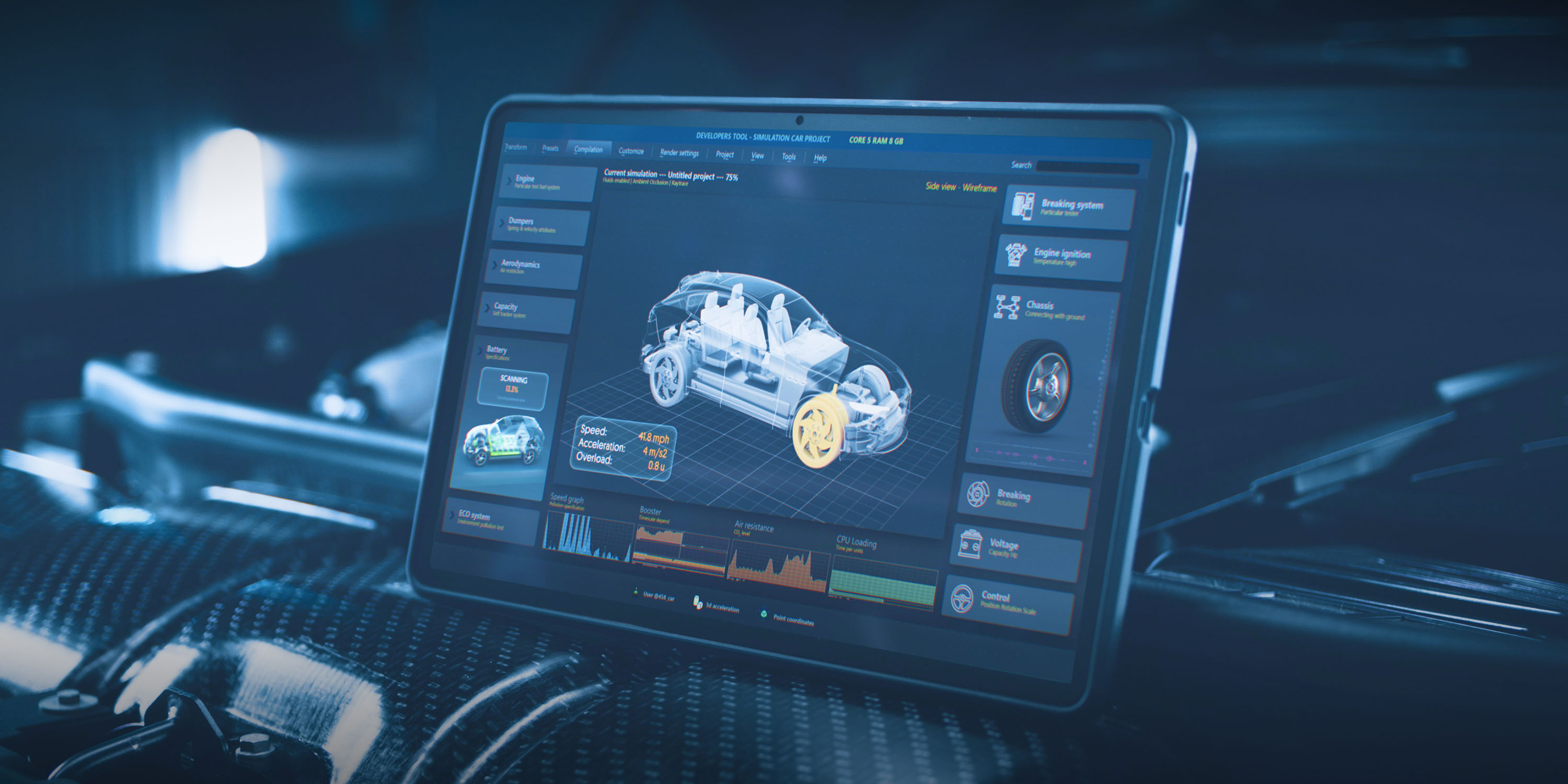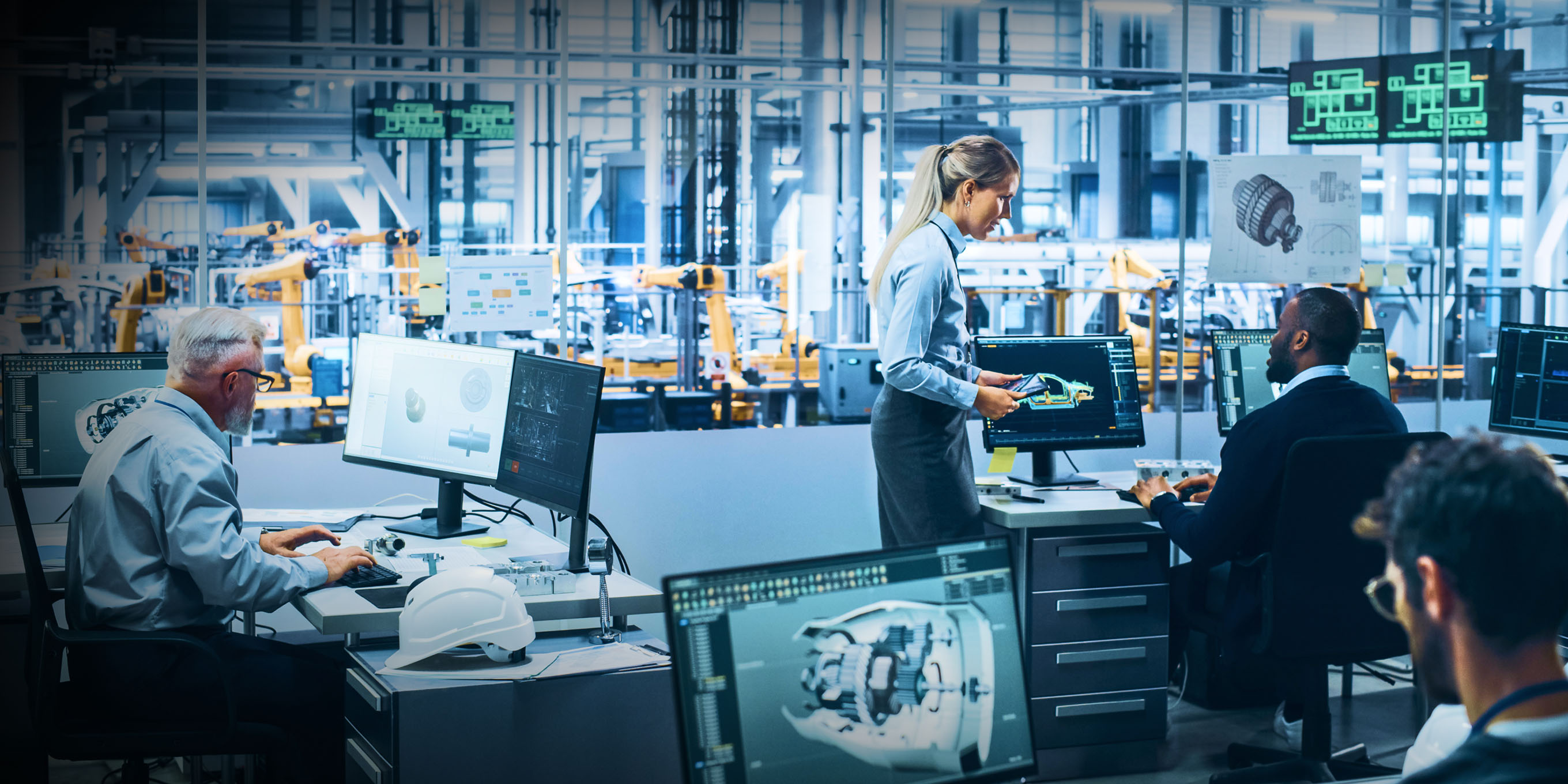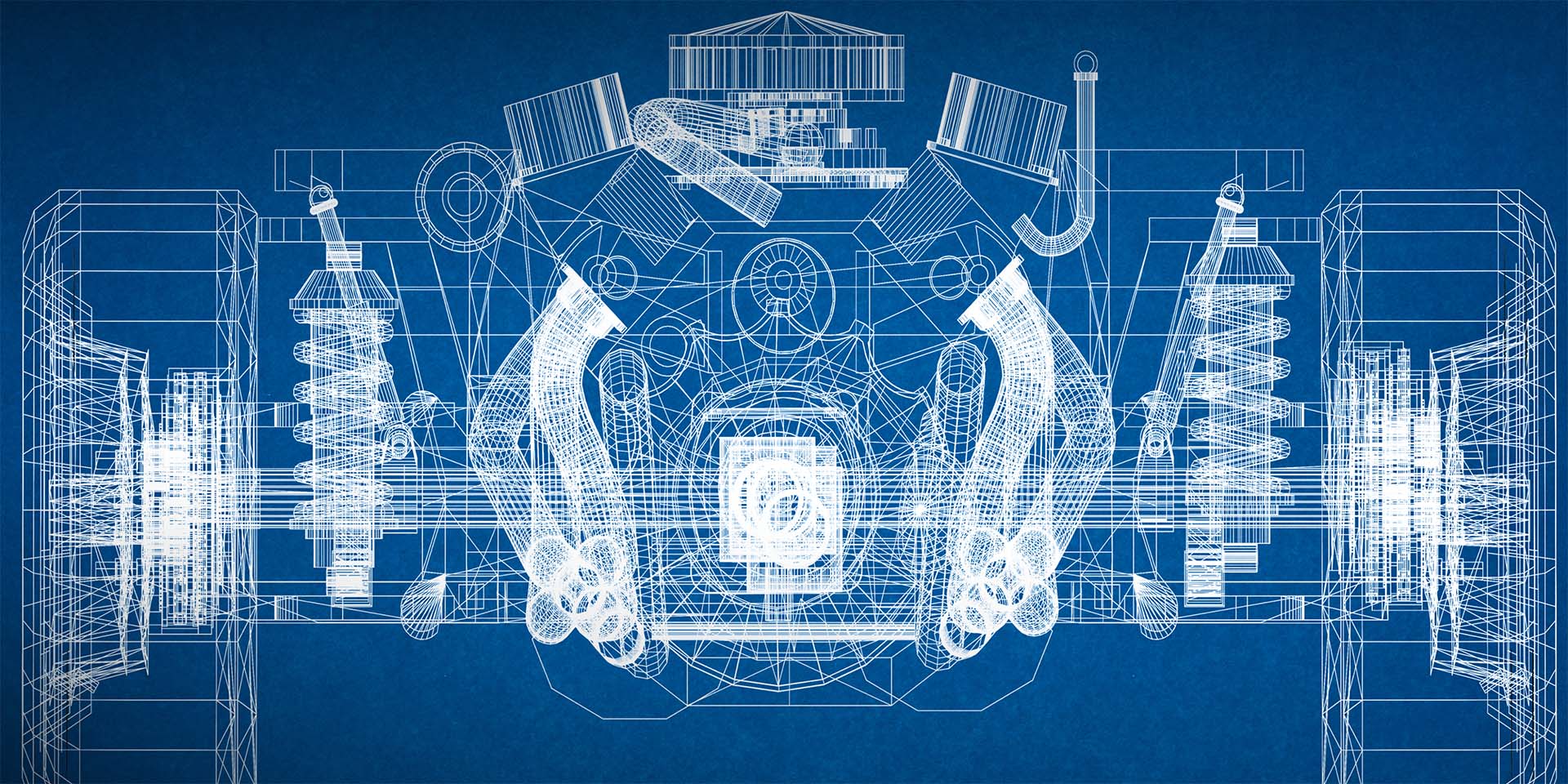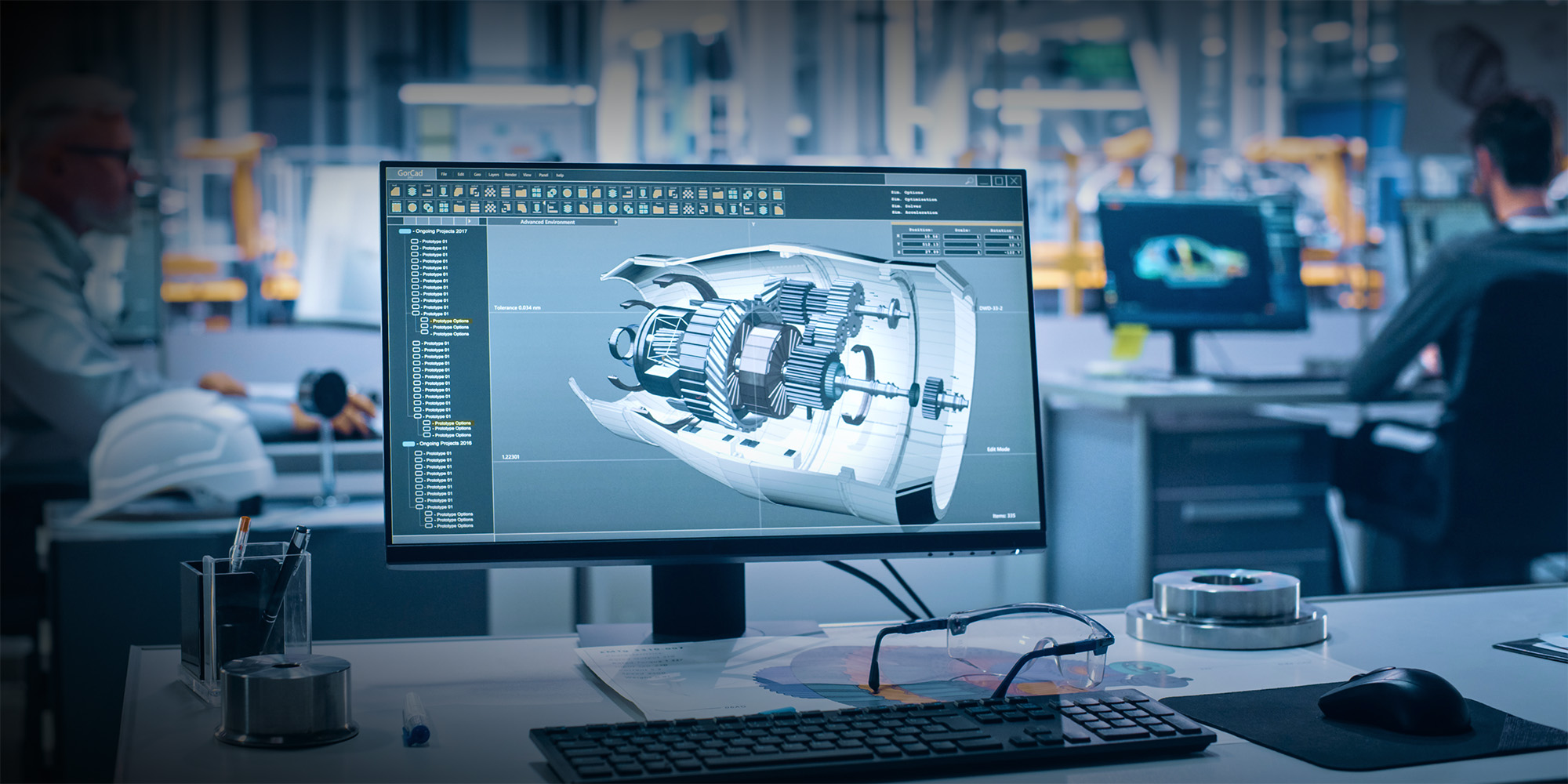
Dorian Derežić - 03/04/2024 | 12 min read
SpaceTime Research and Development Automotive
In automotive manufacturing, the ability to quickly adapt and innovate based on solid, data-driven insights sets industry leaders apart.

As car manufacturers navigate through rapidly evolving technological landscapes and increasing market competition, the strategic use of historical data has become more crucial than ever.
This is where SpaceTime emerges as a transformative force, reshaping how automotive research and development harnesses past data to fuel future innovations.
Mireo SpaceTime is not just a tool – it is a comprehensive platform that leverages the power of historical data analysis to offer unprecedented insights into vehicle performance, design efficacy, and operational optimization.
By systematically capturing and analyzing data over time, SpaceTime provides automotive OEMs with a robust foundation to make informed decisions, predict trends, and foresee challenges – thereby significantly enhancing the R&D process.
Historical data, encompassing everything from vehicle telemetry to user interactions and environmental conditions, offers a goldmine of information that, when properly analyzed, can reveal patterns, trends, and anomalies that are not immediately apparent.
In this article, we'll delve deep into how SpaceTime's capabilities in handling historical data are not just supporting but revolutionizing automotive R&D – enabling OEMs to push the boundaries of innovation and efficiency.
In the realm of automotive development, the ability to look back and learn from accumulated data can be as crucial as the capacity to drive forward. SpaceTime is adept at transforming vast amounts of historical data collected from a myriad of sources into coherent, actionable intelligence.
This capability is foundational for automotive manufacturers aiming to enhance their vehicles' design, performance, and user experience.
Mireo SpaceTime excels in integrating data from diverse sources, including vehicle sensors, user inputs, environmental factors, and more. This integration allows for a holistic view of the vehicle’s lifecycle and operations.
By aggregating data from millions of vehicles over multiple years, SpaceTime provides OEMs with the perspective needed to see beyond isolated incidents or short-term trends.
Once the data is integrated, SpaceTime applies advanced data processing techniques to cleanse, organize, and structure the information. This process ensures that the data is not only accurate but also formatted for effective analysis.
The system can handle complex data structures and large datasets that are typical in the automotive industry, making it an invaluable resource for R&D teams dealing with diverse data types and volumes.
Through its sophisticated algorithms, SpaceTime identifies patterns and trends within the historical data. This capability is critical for understanding long-term performance and durability trends, component usage, user behavior patterns, and potential design flaws.
By recognizing these patterns, automotive engineers can pinpoint areas for improvement, anticipate potential failures, and better understand the factors influencing vehicle performance.
Leveraging historical data, SpaceTime offers predictive analytics capabilities, enabling OEMs to forecast future trends and potential issues before they manifest.
This proactive approach allows manufacturers to initiate preventive measures, refine designs, and optimize maintenance schedules based on predicted wear and tear, rather than reacting to failures after they occur.
To aid in the dissemination of insights throughout the organization, SpaceTime can be easily connected to all types of popular data visualization tools and platforms such as Tableau and PowerBI. These tools allow engineers and decision-makers to view data in intuitive formats, customize reports to focus on key metrics, and visually explore complex datasets.
Whether it’s heat maps, time series, or regression analyses, visualization capabilities make it easier to interpret vast amounts of data, fostering informed decision-making across departments.
One of the core features of Mireo SpaceTime is its ability to continuously learn from new data inputs. As more historical data is gathered and analyzed, the system improves their accuracy and relevance.
This capability ensures that the insights provided are not just based on past data but are also evolving with new information, keeping OEMs at the cutting edge of innovation.

Historical data analysis is fundamentally reshaping the approach to R&D in the automotive industry. By leveraging past data, automotive manufacturers gain the ability to make informed decisions that not only enhance design and functionality but also optimize production costs and improve market responsiveness.
Here’s how Mireo SpaceTime’s capabilities in historical data analysis are transforming automotive R&D.
Historical data analysis allows for a refined approach to vehicle design and development. By evaluating performance data over the lifespan of previous models, R&D teams can identify which features meet durability standards and which are prone to issues.
This deep dive into past performance helps in pinpointing design elements that need reevaluation or enhancement, thus improving the precision and reliability of new models. It reduces the reliance on guesswork or purely theoretical modeling in the design phase, leading to vehicles that better meet the practical demands of users.
One of the most significant impacts of historical data analysis is its ability to help automotive manufacturers reduce production costs. By analyzing which components or features are most used or valued by customers, OEMs can prioritize these for further development or enhancement, while less utilized or non-essential features can be simplified or removed.
This targeted approach prevents overproduction and minimizes waste, leading to a more cost-effective production process without compromising on quality or customer satisfaction.
Through the analysis of historical data, manufacturers can develop highly accurate predictive maintenance schedules. This not only helps in extending the life of the vehicle by preventing breakdowns but also significantly reduces maintenance costs over the vehicle's lifecycle.
By predicting which parts will need maintenance and when proactive steps can be taken to address issues before they result in costly repairs or recalls.
The ability to quickly identify and resolve problems is greatly enhanced by historical data analysis. By having a comprehensive view of how similar issues were handled in the past, R&D teams can devise quicker and more effective solutions.
This rapid problem-solving capability is critical in maintaining high standards of vehicle reliability and customer trust, especially in an industry where safety and performance are paramount.
Finally, the insights derived from historical data are invaluable for fostering innovation. By understanding trends in component durability, feature popularity, and performance under various conditions, R&D teams are equipped to innovate with purpose.
This targeted innovation, guided by real-world data, ensures that new developments are not only technologically advanced but also aligned with market needs and customer expectations.

Historical data holds a treasure trove of insights that can transform the automotive industry's approach to research and development. SpaceTime's sophisticated data analysis capabilities enable OEMs to convert vast amounts of historical data into actionable insights.
This conversion is pivotal for enhancing vehicle design, improving operational efficiencies, and refining customer experiences. Here’s how automotive OEMs leverage historical data for actionable R&D insights.
The first step in translating historical data into actionable insights is identifying trends and anomalies over the lifecycle of vehicle models. Mireo SpaceTime enables OEMs to track and analyze performance metrics across different batches of vehicles. This analysis can reveal patterns such as frequent failures of specific parts under certain conditions or unusually high performance in particular models.
By identifying these trends, R&D teams can focus their efforts on replicating successful features and redesigning or eliminating problematic ones.
Through detailed analysis of how features are used by customers, OEMs can tailor future designs to better match user preferences and needs. Historical data provides insights into which features are most and least used, which are prone to issues, and how they contribute to overall vehicle satisfaction.
This information is crucial for deciding which features to enhance, which to simplify, and which to remove, thereby aligning product development more closely with market demands and increasing the overall value proposition of new models.
By leveraging insights from historical data, automotive manufacturers can streamline their product development cycles. Understanding what has worked in the past and what hasn’t allows OEMs to reduce time spent on trial and error, focusing instead on proven strategies and avoiding past mistakes.
This leads to a more efficient R&D process, quicker time-to-market for new innovations, and lower development costs.
SpaceTime's historical data capabilities extend beyond reactive measures into the realm of predictive analytics. By analyzing past data, OEMs can forecast future trends, anticipate market shifts, and prepare for upcoming regulatory changes.
This foresight enables proactive adjustments in product lines, marketing strategies, and investment plans, ensuring that companies remain competitive and responsive to future challenges and opportunities.
Historical data analysis also plays a critical role in customizing maintenance and service schedules to maximize vehicle longevity and performance. By understanding the typical lifecycle of various components and systems, OEMs can create more accurate, vehicle-specific maintenance plans that prevent issues before they arise.
This not only enhances customer satisfaction through reduced vehicle downtime but also decreases warranty and service costs for the manufacturer.
Finally, the strategic use of historical data insights can guide high-level decision-making within automotive companies. From choosing which technologies to invest in, to determining the focus areas for future research, or identifying potential partnerships and acquisitions, data-driven insights provide a solid foundation for making informed, strategic decisions that can significantly impact the company’s direction and success.
SpaceTime's historical data analysis capabilities provide a suite of technical advantages that are instrumental in enhancing the research and development processes within the automotive industry. These capabilities enable OEMs to handle large volumes of data efficiently, uncover deep insights, and base their strategic decisions on solid, data-driven foundations. Here’s how these technical advantages play out in practical scenarios.
SpaceTime excels in integrating disparate data sources into a cohesive analysis platform. It is designed to seamlessly aggregate all data, allowing for a holistic view of the vehicle's performance and issues across its entire lifecycle.
This integration is crucial for detecting patterns that are only visible when considering the full spectrum of data.
At the heart of SpaceTime’s offerings is its advanced data processing technology. The platform can handle massive datasets — typical in the automotive industry — with speed and accuracy. This capability is supported by sophisticated analytics algorithms that can sift through historical data to identify trends, anomalies, and correlations.
For OEMs, this means faster turnaround times for queries and reports, enabling quicker responses to R&D questions and faster iterations in the development cycle.
Mireo SpaceTime is highly scalable, designed to grow with the needs of an automotive OEM. As companies expand and collect more data, SpaceTime can easily scale to maintain performance without lag or disruption. This scalability ensures that OEMs can continue to rely on the platform even as their data analysis needs evolve.
Furthermore, the flexibility of the system allows it to adapt to new types of data and new analytical requirements, protecting OEMs’ investment in the long term.
While primarily focused on historical data, Mireo SpaceTime also incorporates predictive analytics capabilities. By analyzing past trends and outcomes, SpaceTime can help OEMs to forecast future behaviors and potential failures. This predictive power is invaluable for proactive R&D, allowing OEMs to anticipate issues before they manifest in real-world scenarios, thus saving costs and enhancing vehicle reliability.
SpaceTime supports the creation of feedback loops within the R&D process. By continuously analyzing how past improvements have affected vehicle performance and user satisfaction, the platform helps OEMs fine-tune their innovations.
This ongoing loop of testing, feedback, and improvement is essential for automotive development, driving quicker refinement of technologies and features.

SpaceTime's historical data analysis capabilities offer substantial business benefits for automotive OEMs. These advantages not only enhance the effectiveness of R&D activities but also drive broader organizational efficiencies, cost savings, and market competitiveness.
Here’s an in-depth look at the specific business benefits of integrating Mireo SpaceTime into R&D processes.
One of the most significant benefits of using Mireo SpaceTime is the acceleration of innovation cycles within automotive R&D departments. By providing rapid access to historical data and insights, SpaceTime enables OEMs to reduce the time from concept to prototype and from prototype to market. This acceleration is achieved through quicker validation of ideas and faster refinement based on historical performance and user feedback.
In an industry where the first mover advantage can be crucial, reducing product development cycles allows OEMs to stay ahead of the competition and capitalize on new market opportunities more effectively.
The depth and accuracy of insights provided by SpaceTime translate into more informed decision-making. With comprehensive data analysis, R&D teams can make choices based on solid evidence rather than assumptions or incomplete information.
This aspect is particularly crucial when deciding on resource allocation, design changes, or strategic directions. Better decision-making reduces the risk of costly missteps and ensures that investments in R&D yield the highest possible returns.
Mireo SpaceTime helps automotive OEMs identify inefficiencies and areas where resources can be better allocated. Historical data analysis highlights components or processes that are over-resourced or underperforming, allowing companies to optimize their spend and focus on areas with the highest impact. Additionally, predictive insights from historical data can preempt costly repairs and recalls, further driving down operational costs.
This proactive approach to maintenance and quality control not only saves money directly but also enhances brand reputation by reducing the frequency and severity of customer-facing issues.
By continually analyzing how existing vehicles perform in real-world conditions, Mireo SpaceTime enables OEMs to refine their designs to better meet customer needs and expectations. This ongoing enhancement process leads to higher product quality as insights from data lead to tangible improvements in vehicle reliability, usability, and features.
High product quality, in turn, boosts customer satisfaction and loyalty, which are key drivers of long-term business success in the competitive automotive market.
The automotive industry is subject to rapid technological changes and evolving consumer preferences. Mireo SpaceTime's historical data analysis capabilities provide OEMs with the agility to respond quickly to these changes. By understanding past trends and outcomes, companies can forecast future shifts more accurately and adapt their strategies accordingly.
This responsiveness not only helps OEMs capture new markets but also protects them against disruptive changes by enabling quicker pivots and innovation.
Leveraging historical data for R&D optimization gives OEMs a distinct competitive edge. The insights gained from SpaceTime can lead to unique product features, better performance, and innovative technologies that set a company apart from its rivals. In an industry driven by differentiation, the ability to offer something unique is a substantial advantage.
This differentiation can help attract new customers, enter new markets, and strengthen the company’s position as an industry leader.
As the automotive industry continues to navigate a rapidly evolving technological landscape, the strategic utilization of historical data through SpaceTime emerges not just as an operational advantage but as a critical business imperative.
The insights derived from comprehensive historical data analysis are not merely adjuncts to the research and development process – they are foundational elements that redefine how automotive OEMs approach innovation, decision-making, and market responsiveness.
Mireo SpaceTime transforms the R&D paradigm from a reactive to a proactive stance. Instead of responding to market changes and consumer demands as they arise, OEMs can anticipate these shifts, using historical data to inform and inspire future innovations. This proactive approach ensures that automotive manufacturers are not just keeping pace with industry trends but are ahead of them, leading the charge in innovation and setting new standards for vehicle performance, safety, and sustainability.
The integration of SpaceTime's historical data analysis capabilities fosters a data-driven culture within automotive organizations. This culture prioritizes evidence-based decision-making, continuous improvement, and a relentless pursuit of excellence. By embedding data at the core of R&D activities, OEMs can create a more agile, responsive, and efficient developmental environment. This shift not only enhances product development cycles but also empowers teams across the organization to leverage data in ways that drive strategic business outcomes.
In an industry as competitive as automotive manufacturing, maintaining a competitive edge is paramount. SpaceTime's historical data analysis provides OEMs with the insights needed to differentiate their offerings from those of competitors. Whether through the development of advanced safety features, the enhancement of fuel efficiency, or the integration of cutting-edge user experience technologies, the insights gleaned from historical data ensure that OEMs can offer distinctive, innovative products that resonate with modern consumers.
Mireo SpaceTime is not merely a tool for managing data; it is a strategic asset that propels automotive OEMs into the future of R&D. By harnessing the full potential of historical data, manufacturers can enhance their operational efficiencies, reduce costs, and significantly improve their market responsiveness. The ability to translate vast amounts of historical data into actionable insights ensures that automotive companies are not only prepared for the future but are actively shaping it. With SpaceTime, the road ahead is data-driven, informed by the lessons of the past and illuminated by the possibilities of tomorrow.
As we look forward, it is clear that the automotive companies that will thrive are those that recognize the value of their data and the power of historical analysis. SpaceTime stands ready to help these forward-thinking companies turn data into one of their most valuable assets – driving innovation, and success in an increasingly complex and challenging market environment.